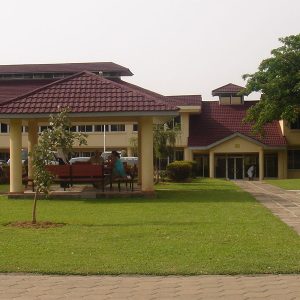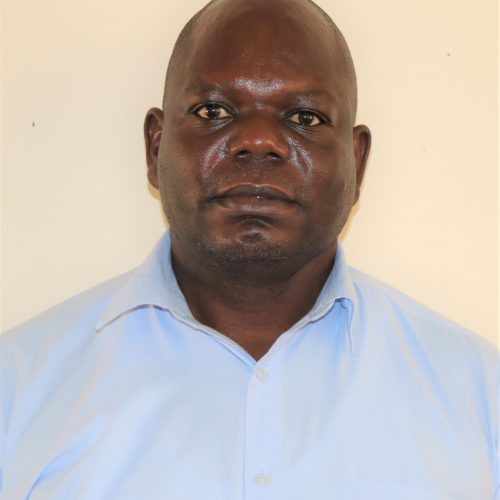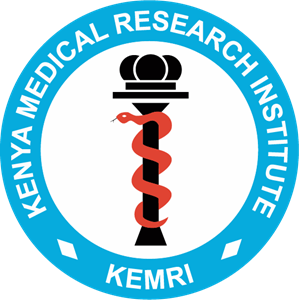CENTER FOR GLOBAL HEALTH RESEARCH (CGHR)-KISUMU

Overview
The Centre for Global Health Research (CGHR) is located in Kisumu, Western Kenya. The facility was originally inherited from the former East African Medical Research Council.
In 1984, the station was named Malaria and Other Protozoal Diseases Centre (MOPDC) later changing to Vector Biology and Control Research Centre (VBCRC), then Centre for Vector Biology and Control Research (CVBCR) and finally Center for Global Health Research (CGHR). The Centre is today one of the 15 Research Centres of the Kenya Medical Research Institute (KEMRI). The Centre is strategically located in Kisumu City, western Kenya region, in an area that is endemic for major infectious diseases.
Since its establishment in 1984, CGHR has been on the world map as the site of ground-breaking research focusing on infectious diseases of medical importance. Specifically, the Centre has carried out cutting-edge research focusing on trials on the efficacy of drugs, emergence of drug and vector resistance, epidemiology, immunology, molecular biology, vector biology, climate and human health, characterization of malaria vaccine candidate antigens, malaria vaccine trials, malaria in pregnancy and interaction of malaria and human immunodeficiency virus (HIV), schistosomiasis, intestinal helminthes, HIV/AIDS and its impact on the community, HIV interaction with other infectious diseases, tuberculosis and reproductive health.
Mission
Our mission is to improve human health and quality of life through research, capacity building, innovation and service delivery
Vision
Our vision is to be a leading centre of excellence in research for human health.
Mandates
- To conduct evidence based research aimed at providing solutions for the reduction of infectious, parasitic, non-infectious diseases and other causes of ill-health in Kenya.This includes, but not limited to:
- Epidemiology and control of Infectious, Non-Communicable and Lifestyle Diseases.
- Molecular Biology, Immunology, Pathophysiology and Genetics of diseases of public health importance
- Vectors of diseases; their biology and ecology, development and evaluation of control tools and IR
- Clinical trials and monitoring drug resistance.
- Climate change and human health.
- Behavioural/Social Science Research in Public Health
- Emerging and Reemerging Diseases
- Provide training and capacity building in public health
- Provide leadership in human health research
- Promote and sustain excellence in research
- Strengthen principles of good corporate governance
- Disseminate and translate research findings for evidence based policy formulation and implementation
- Strengthen research partnerships and relationships with stakeholde
Achievements
Evidence on best Deworming strategies to be employed for Mass Drug Administration (MDA) against Helminth infections:
Preventive chemotherapy is considered the key component in the control of Schistosomiasis and intestinal worms, and among questions that have been addressed on our research platform is how different deworming strategies (whether community-wide or school-based) impact on morbidity in areas with different infection prevalence thresholds. Some of the data from our Schistosomiasis Consortium for Operational Research (SCORE) studies is currently being shared with the Ministry of Health in order to provide evidence on the best combination of deworming strategies based on prevalence thresholds, both in terms of duration and frequency of MDAs.
Evidence of Schistosomiasis in pre-school age children (< 5 years) and need for change in deworming policy: The WHO recommended control strategy of Schistosomiasis is based on preventive chemotherapy interventions targeting the majority of the at-risk population
The current gold standard treatment employs annual single oral dose of the drug Praziquantel (PZQ) 600 mg tablets for adults and school age children at 40 mg/kg. However, pre-School Aged Children (pre-SAC), which are a high-risk group for Schistosome infections accounting for 10-20 million of the global prevalence, are currently not included during treatment campaigns due to the lack of a suitable PZQ pediatric formulation. In this regard, a pediatric schistosomiasis consortium was formed in July 2012 under the leadership of Merck with the goal of developing a suitable pediatric formulation of PZQ for pre-SAC and register its use in schistosomiasis.
Evidence for schistosomiasis transmission in urban setting: Schistosomiasis has always been considered a rural phenomenon. However, our research in an informal urban setting has provided evidence not only for the occurrence of schistosomiasis in an urban setting, but also active transmission in situ. These findings have informed the inclusion of such otherwise neglected settings in National deworming programs, and the strategies to use in such settings.
Deworming activities targeting Schistosomiasis and Soil-transmitted Helminths:
Over the last 5 years, and in partnership with the Ministry of Health, over 70,000 individuals in most at risk areas were dewormed annually in our annual Mass Drug Administration programs targeting Schistosomiasis and Soil-Transmitted Helminths (STH), conducted by three key NTD projects in western Kenya. Health education and awareness campaigns were also embedded in the deworming activities, and are a continuous activity.
Annual NTD Conference:
We have over the years successfully hosted the annual Neglected Tropical Diseases (NTD) Conference. In 2016, the 10th annual NTD Conference was jointly hosted by the KEMRI’s NTD Unit and the Ministry of Health’s NTD Unit. This annual event presents an important and unique forum for showcasing and disseminating research findings from our studies to other stakeholders and partners from the Ministry of Health, local universities and other Non-governmental agencies working on NTDs.
Ongoing Projects
- A demographic surveillance system (DSS) in the previous bed net study area aimed at establishing a high quality surveillance system in a population of 135,000 and provide an infrastructure that will yield reliable demographic
data and serve as a platform to evaluate the impact of public health interventions on morbidity and mortality. - Population genetics of malaria vectors.
- The effects of climate change on human health.
- The epidemiology and immunology of malaria epidemics in the highlands.
Completed Projects
- A community-based trial on the impact of insecticide-treated bed nets on childhood morbidity and mortality in an area of intense and perennial malaria transmission in western Kenya,
- The interaction of malaria and HIV in pregnant women and the immuno-epidemiology of malaria in western Kenya,
- The Asembo Bay Cohort Project.
Neglected Tropical Diseases Division
The Neglected Tropical Diseases (NTD) Unit hosted at CGHR brings together different researchers working on disease specific aspects of NTDs at KEMRI. The Unit addresses the critical need to align research program with national and current global agenda.
HIV Research Division
Kenya Medical Research Institute (KEMRI) in collaboration with Centers for Disease Control & Prevention (CDC) established the HIV Research Division (HIVR) in 2001 to spearhead HIV prevention and treatment research within the Nyanza Region in Kenya, an area with the greatest burden of HIV/AIDS in the country.
Malaria Division
Malaria remains an important public health problem and an impediment to social and economic development in sub-Saharan Africa. In Kenya malaria is one of the leading causes of morbidity and mortality and 80 percent of the population is at risk
Tuberculosis Division
Tuberculosis (TB) is a potentially serious infectious disease that mainly affects your lungs. The bacteria that cause tuberculosis are spread from one person to another through tiny droplets released into the air via coughs and sneezes. Through a collaboration involving the Kenya Medical Research Institute (KEMRI), the US Centers for Disease Control and Prevention (CDC) and many other partners, the Division is conducting critical research studies aimed at generating data that is aimed at TB control progammes and formulation of evidence-based TB prevention and control policies.
Entomology Division
Ongoing Studies/Activities/Programmes:
- Building the Capacity for the utility of Next Generation Sequencing in Insecticide Resistance Management by African National Malaria Control programs (March 2019 – August 2020)
- The East-South Africa Anopheles funestus Consortium: Building the capacity for An. funestus entomological surveillance, insecticide resistance and genomic diversity studies in Malawi, Kenya, Uganda and Tanzania (April 2019 – April 2020)
- Anopheles gambiae and Anopheles arabiensis genetic diversity and association with insecticide resistance in Kenya (April 2019 – April 2020)
- Advancing Spatial Repellents for Vector-Borne Disease Control (2019-2023)
- Impact of insecticide resistance on the behaviour and fitness of malaria vectors (2017-2022)
- Using spatial statistics and genomics to develop epidemiologically relevant definitions of insecticide resistance in African Malaria Vectors (March 2018 – March 2019).
- Entomological evaluation of an attractive targeted sugar bait (ATSB) in western Kenya. Part of a Multi-Country Study, others being Mali and Zambia, results of this trial to determine an award of a Multi-Country 3-year Phase 3 evaluation of ATSB
- Genome-based diagnostics for mapping, monitoring and management of insecticide resistance in major African malaria vectors (2016-2020)
Products and services offered
Vector Borne Disease surveillance (Malaria, Dengue, Rift Valley Fever, Chikungunya Virus)
- Phase 1 Vector control product evaluations (Laboratory bioassays, tunnel tests, cage tests)
- Phase 2 Vector control product evaluations (Semi-Field trial, Experimental Hut trials)
- Phase 3 and 4 vector control product evaluations (Cluster randomized epidemiology trials, continuous product evaluations such as bednet durability and bio-efficacy)
- Laboratory testing of entomology specimen for species identification, sporozoite detection, insecticide resistance detection among others.
- Trainings and capacity building for entomology surveillance, insecticide resistance surveillance among others
Selected Publications
- Agumba S, Gimnig JE, Ogonda L, Ombok M, Kosgei J, Munga S, Guyah B, Omondi S, Ochomo E. Diagnostic dose determination and efficacy of chlorfenapyr and clothianidin insecticides against Anopheles malaria vector populations of western Kenya. Malar J. 2019 Jul 17;18(1):243. doi: 10.1186/s12936-019-2858-z. PMID: 31315614; PMCID: PMC6637467.
- Moyes, C. L., A. Wiebe, K. Gleave, A. Trett, P. A. Hancock, G. G. Padonou, M. S. Chouaïbou, A. Sovi, S. A. Abuelmaali, E. Ochomo, C. Antonio-Nkondjio, D. Dengela, H. Kawada, R. K. Dabire, M. J. Donnelly, C. Mbogo, C. Fornadel, and M. Coleman. 2019. Analysis-ready datasets for insecticide resistance phenotype and genotype frequency in African malaria vectors. Scientific Data 6: 121.
- Sedda L, Lucas ER, Djogbénou LS, Edi AVC, Egyir-Yawson A, Kabula BI, Midega J, Ochomo E, Weetman D, Donnelly MJ. Improved spatial ecological sampling using open data and standardization: an example from malaria mosquito surveillance. J R Soc Interface. 2019 Apr 26;16(153):20180941. doi: 10.1098/rsif.2018.0941. PubMed PMID: 30966952.
- Smit MR, Ochomo EO, Aljayyoussi G, Kwambai TK, Abong’o BO, Bousema T, Waterhouse D, Bayoh NM, Gimnig JE, Samuels AM, Desai MR, Phillips-Howard PA, Kariuki SK, Wang D, Ward SA, Ter Kuile FO. Human Direct Skin Feeding Versus Membrane Feeding to Assess the Mosquitocidal Efficacy of High-Dose Ivermectin (IVERMAL Trial). Clin Infect Dis. 2019 Sep 13;69(7):1112-1119. doi: 10.1093/cid/ciy1063. PubMed PMID: 30590537; PubMed Central PMCID: PMC6743833.
- Machani MG, Ochomo E, Sang D, Bonizzoni M, Zhou G, Githeko AK, Yan G, Afrane YA. Influence of blood meal and age of mosquitoes on susceptibility to pyrethroids in Anopheles gambiae from Western Kenya. Malar J. 2019 Apr 2;18(1):112. doi: 10.1186/s12936-019-2746-6. PubMed PMID: 30940139; PubMed Central PMCID: PMC6444593.
- Abong’o B, Yu X, Donnelly MJ, Geier M, Gibson G, Gimnig J, Ter Kuile F, Lobo NF, Ochomo E, Munga S, Ombok M, Samuels A, Torr SJ, Hawkes FM. Host Decoy Trap (HDT) with cattle odour is highly effective for collection of exophagic malaria vectors. Parasit Vectors. 2018 Oct 15;11(1):533. doi: 10.1186/s13071-018-3099-7. PubMed PMID: 30318015; PubMed Central PMCID: PMC6191991.
- Gimnig JE, Ochomo E. New opportunities for malaria vector control. Lancet. 2018 Aug 18;392(10147):534-536. doi: 10.1016/S0140-6736(18)31817-8. Epub 2018 Aug 10.
- Smit MR, Ochomo EO, Aljayyoussi G, Kwambai TK, Abong’o BO, Chen T, Bousema T, Slater HC, Waterhouse D, Bayoh NM, Gimnig JE, Samuels AM, Desai MR, Phillips-Howard PA, Kariuki SK, Wang D, Ward SA, Ter Kuile FO. Safety and mosquitocidal efficacy of high-dose ivermectin when co-administered with dihydroartemisinin-piperaquine in Kenyan adults with uncomplicated malaria (IVERMAL): a randomised, double-blind, placebo-controlled trial. Lancet Infect Dis. 2018 Jun;18(6):615-626.
- Kleinschmidt I, Bradley J, Knox TB, Mnzava AP, Kafy HT, Mbogo C, Ismail BA, Bigoga JD, Adechoubou A, Raghavendra K, Cook J, Malik EM, Nkuni ZJ, Macdonald M, Bayoh N, Ochomo E, Fondjo E, Awono-Ambene HP, Etang J, Akogbeto M, Bhatt RM, Chourasia MK, Swain DK, Kinyari T, Subramaniam K, Massougbodji A, Okê-Sopoh M, Ogouyemi-Hounto A, Kouambeng C, Abdin MS, West P, Elmardi K, Cornelie S, Corbel V, Valecha N, Mathenge E, Kamau L, Lines J, Donnelly MJ. Implications of insecticide resistance for malaria vector control with long-lasting insecticidal nets: a WHO-coordinated, prospective, international, observational cohort study. Lancet Infect Dis. 2018 Jun;18(6):640-649.
- Omondi S, Mukabana WR, Ochomo E, Muchoki M, Kemei B, Mbogo C, Bayoh N. Quantifying the intensity of permethrin insecticide resistance in Anopheles mosquitoes in western Kenya. Parasit Vectors. 2017 Nov 6;10(1):548.

Dr. Erick Muok
Ag. Deputy Director CGHR
Dr. Erick Muok is an experienced researcher and public health manager.
He has been a Principal and co-principal investigator and a manager in several projects in western Kenya providing technical support, logistic, administrative and financial management support in areas of health system strengthening, nutrition, parasite Immunology resistance, targeted NTDs like Schistosomiasis and other soil transmitted helminths
Contact Info
Kenya Medical Research Institute
Center for Global Health Research (CGHR)
P.O. Box: 1578 – 40100, Kisumu, Kenya
Tel: +254 (20) 22923
Email: ek.og.irmek@rhgc
